How Remote Therapeutic Monitoring (RTM) Enables Data-Driven Decision Making in Outpatient Physical Therapy
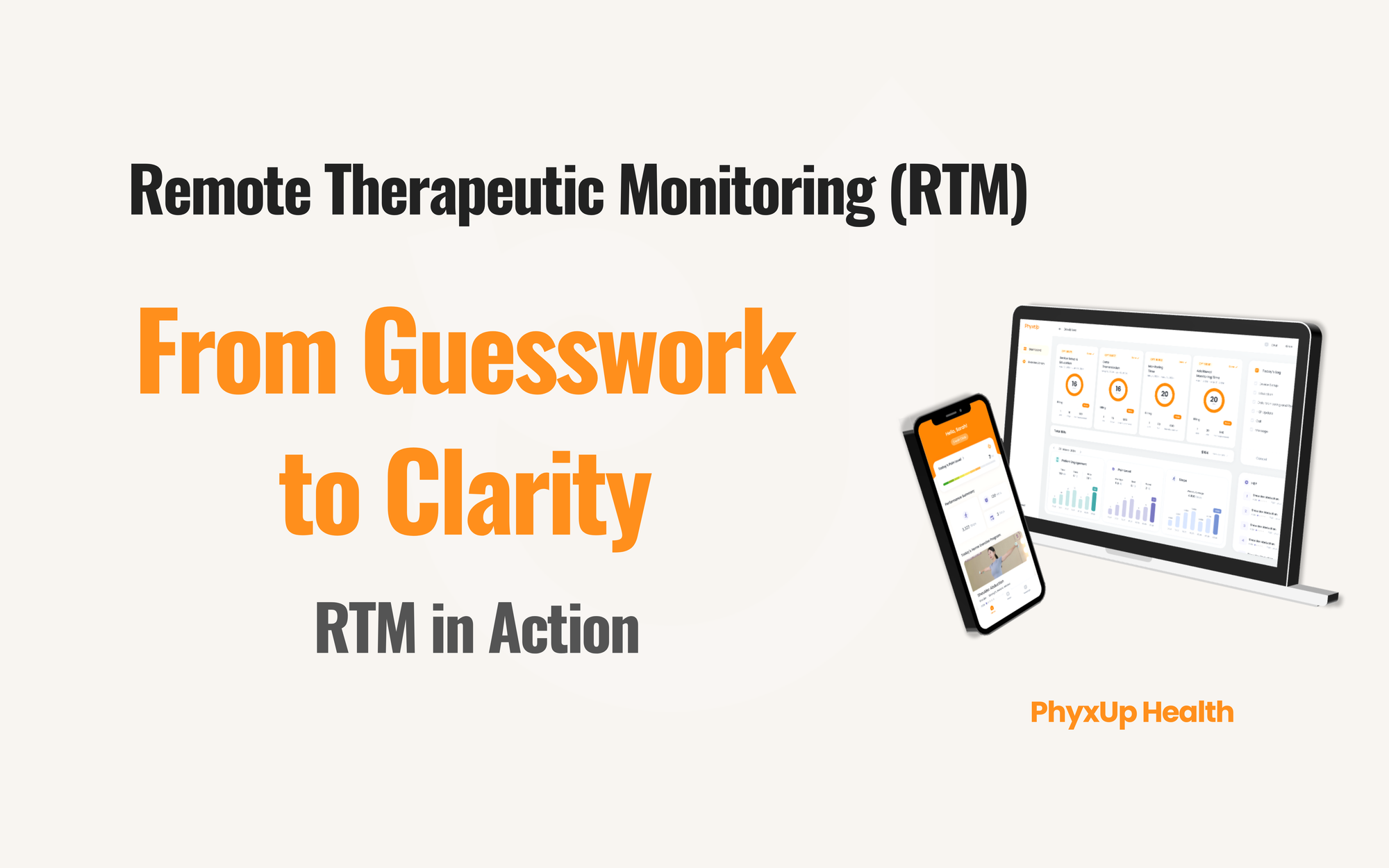
Ask any outpatient physical therapist. Even if you’re seeing a patient twice a week, there’s a whole lot you don’t see.
You can assess strength, range of motion, or gait during in-clinic sessions. But what about the rest of the week? What’s happening between visits in your patient’s daily life? Their pain levels, activity habits, or adherence to their home program?
To fill in the gaps, therapists ask:
“How did it feel between visits?”
“Were you able to do your home program?”
“Did anything make it worse?”
These are valid questions. But the answers? They rely entirely on patient memory which is often vague, partial, or forgotten.
That’s not a sign of disinterest. It’s just human nature. Our memory isn’t perfect, especially when life is busy and symptoms fluctuate.
That’s where Remote Therapeutic Monitoring (RTM) comes in.
What Is Remote Therapeutic Monitoring (RTM) in Physical Therapy?
It enables providers to remotely track:
- Adherence to home exercise programs (HEPs)
- Symptom progression (pain, fatigue, range of motion)
- Patient-reported outcomes and barriers
And yes, providers can bill for the time spent reviewing and responding to this data.
But RTM is more than a billing opportunity. It’s a clinical tool that fills the information gap between visits, helping make rehab more tailored, efficient, and effective.
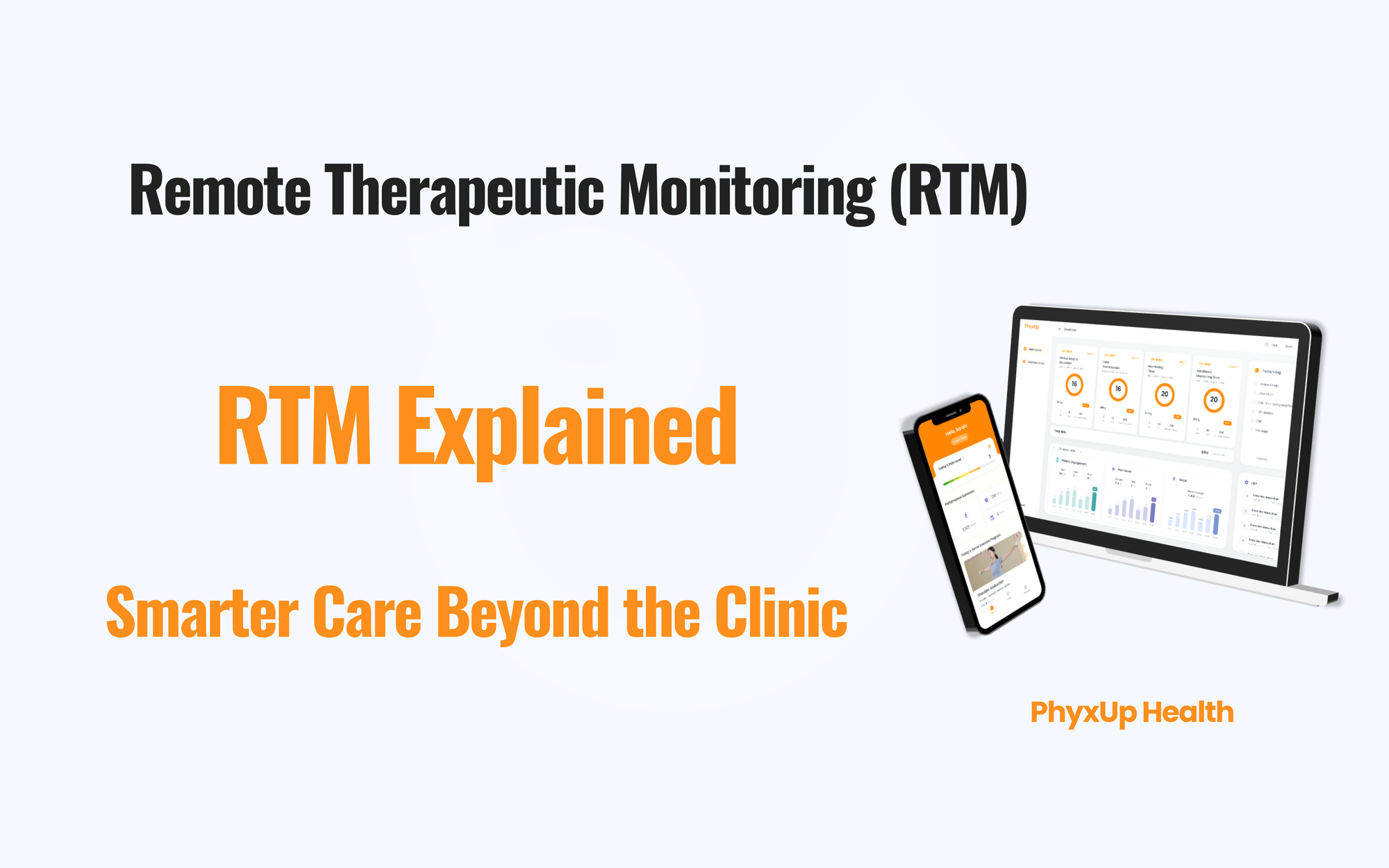
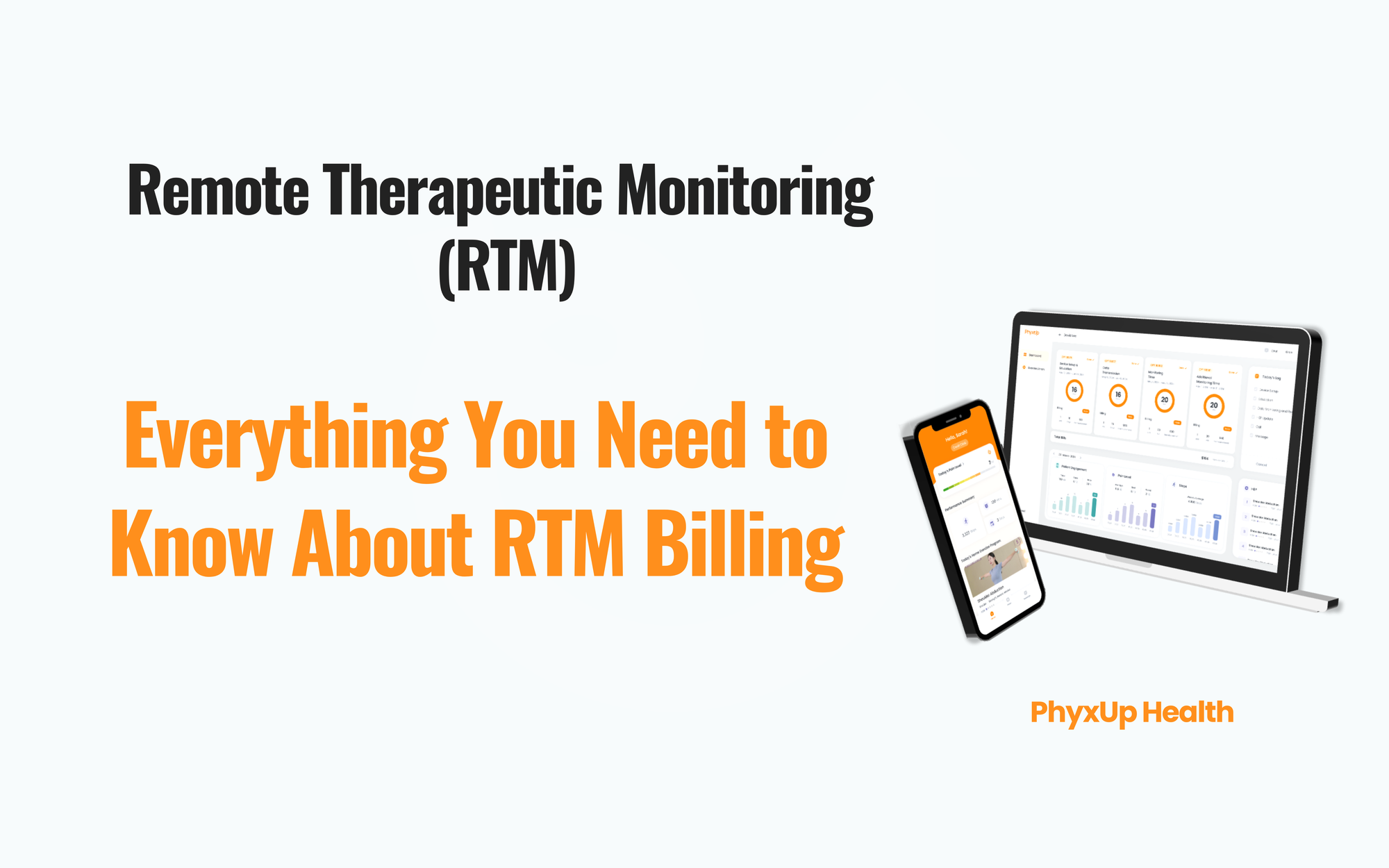
Why Clinical Decisions Without RTM Fall Short
Even with the best clinical assessments such as strength testing, outcome measures, and functional evaluations, what happens outside the clinic often remains a mystery.
Imagine this scenario:
You’re treating a post-op ACL patient who comes in twice a week. Over the weekend, they:
- Skipped their exercises
- Experienced a spike in knee pain after taking stairs
- Walked significantly less than usual
If they don’t remember to mention these details or choose not to, you’ll never know. You’ll update the plan of care based on guesswork, not facts.
That can lead to:
- Overloading a joint that hasn’t recovered
- Missing warning signs of regression
- Failing to advance care when the patient is actually ready
Even the most motivated patients forget things. Your sessions start to feel like detective work:
- “Did you complete your exercises last weekend?”
- “Which activity triggered the pain again?”
- “Was it your left or right knee that got worse?”
This back-and-forth isn’t a result of poor compliance. It’s a limitation of memory.
RTM: Filling the Gaps Between Visits with Real-Time Data
A digital RTM platform like PhyxUp Health can track:
- Daily or weekly HEP adherence
- Pain scores and symptom changes
- Step counts or activity levels
- Patient-reported outcomes
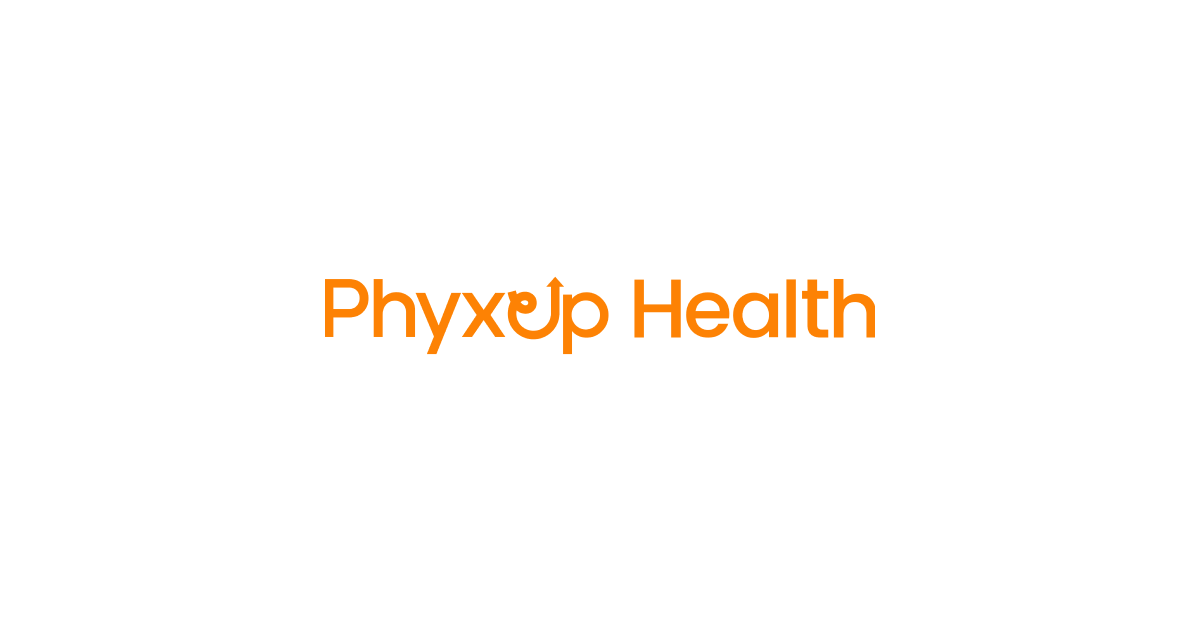
Now, you’re not starting each visit by asking. You’re already informed.
You can lead with:
“I noticed you skipped Sunday’s routine. Was something going on?”
“Your shoulder pain spiked after Wednesday. Let’s modify that exercise.”
“You’ve been consistent for 10 days. Let’s progress the protocol.”
This turns visits into meaningful, action-based sessions, not memory tests.
The Benefits of RTM for Physical Therapists
Here’s how RTM improves both clinical quality and operational efficiency:
1. Real-Time Alerts and Recovery Trends
Know immediately when something’s off. Pain spike? Skipped sessions? RTM platforms flag it right away so you can intervene early and adjust care proactively.
2. Better Plan of Care Updates
Make treatment decisions using current data instead of guesswork. It helps avoid both under-dosing and over-dosing, ensuring the plan of care stays aligned with the patient’s real-time needs.
3. Streamlined Sessions
Skip the “catch-up” phase during each visit. Get straight to assessment, progression, or modification. This efficiency benefits both the patient and the clinic’s productivity.
4. Improved Documentation and Reimbursement Support
RTM provides data that justifies every decision. That helps with audits, clinical notes, and insurance claims. It also strengthens your clinic’s compliance posture.
5. Higher HEP Compliance
Patients who know they’re being monitored tend to stick to their home programs. Engagement leads to better outcomes, and the accountability built into RTM motivates consistency.
How RTM Gets Reimbursed: CPT Codes and Revenue Potential
RTM is not just a care tool. It’s a revenue opportunity. These CPT codes enable billing for digital care you’re already providing.
| CPT Code | Description | Frequency | Avg. Reimbursement |
|---|---|---|---|
| 98975 | Initial setup and onboarding | Once per episode | ~$19 |
| 98977 | HEP monitoring technology | Monthly | ~$55 |
| 98980 | First 20 mins clinical review | Monthly | ~$50 |
| 98981 | Additional 20 mins review | Monthly | ~$40 |
Clinics using RTM have reported over $10,000/month in additional revenue without hiring more staff or increasing in-person sessions.
Real-Life Impact of RTM in Outpatient Rehab
Clinics using RTM consistently report:
- Higher HEP adherence (2–3x improvement)
- Reduced no-shows and late cancellations
- Better patient engagement and follow-through
- Faster recovery due to timely intervention
Patients, too, notice the difference. One said:
“I finally stayed consistent with my exercises because someone was checking in, even when I wasn’t at the clinic.”
RTM helps build a continuous care experience that patients feel and appreciate. It makes rehab more than just a once-or-twice-a-week appointment.
RTM in Action: Supporting Proactive Physical Therapy
RTM enables clinicians to:
- Identify early signs of non-compliance
- Catch setbacks in real time
- Progress patients with confidence
- Monitor at-risk patients more closely
Whether you’re treating a weekend warrior, a post-op shoulder, or a chronic low back case, RTM lets you tailor the plan based on real behavior, not assumptions.
It empowers therapists to shift from reactive to proactive care. That’s a game changer in outpatient physical therapy.
Final Thoughts: Better Data Equals Better Decisions
Outpatient care doesn’t begin and end in the clinic. The real rehab happens between visits, and RTM makes that visible.
By incorporating Remote Therapeutic Monitoring into your practice, you gain:
- Objective insights into patient behavior
- Stronger engagement and accountability
- Reimbursable support for digital care
- The ability to make smarter, faster clinical decisions
At PhyxUp Health, our mission is to empower physical therapists with the tools and support to deliver modern, effective care — and RTM is one of the most powerful ways to do just that.
Because in physical therapy, the more you know, the better you can help. And RTM helps you know more.

